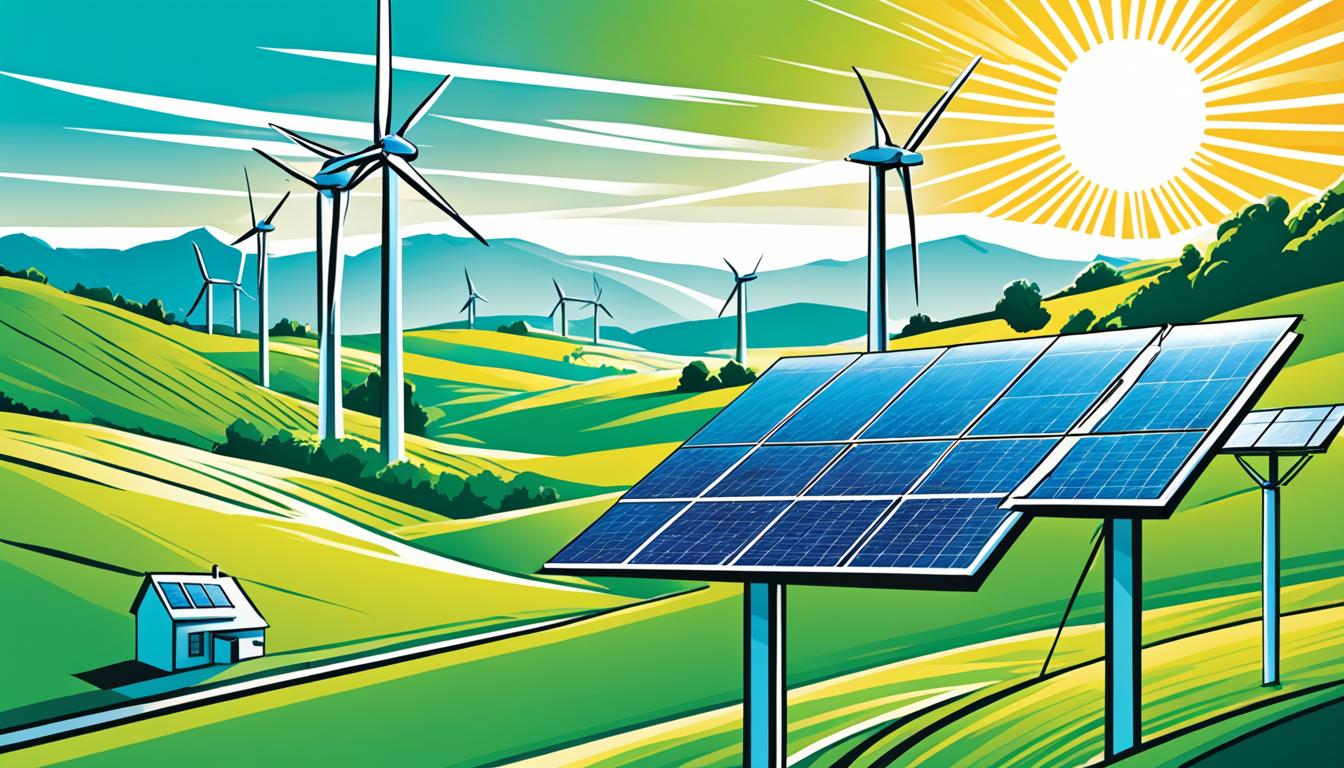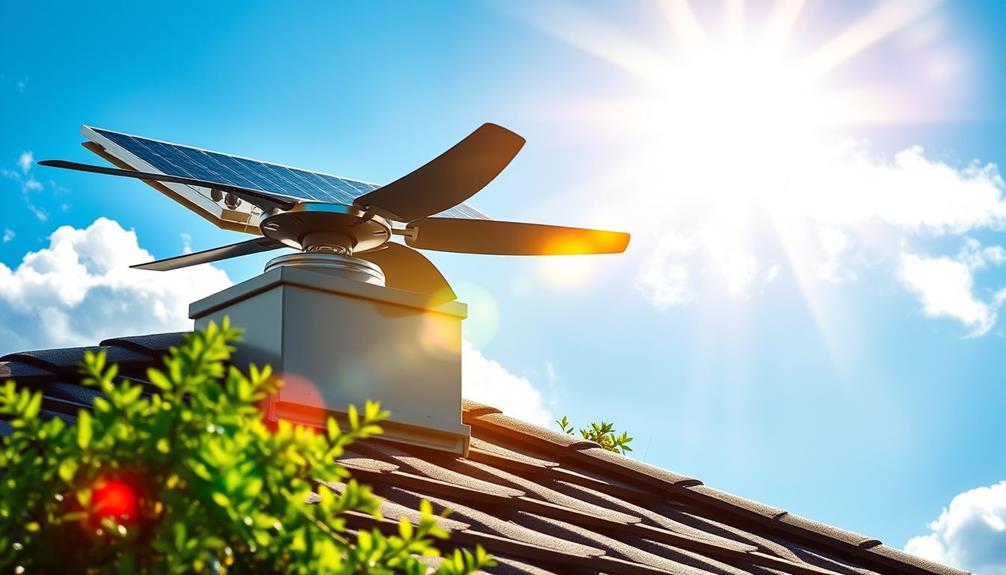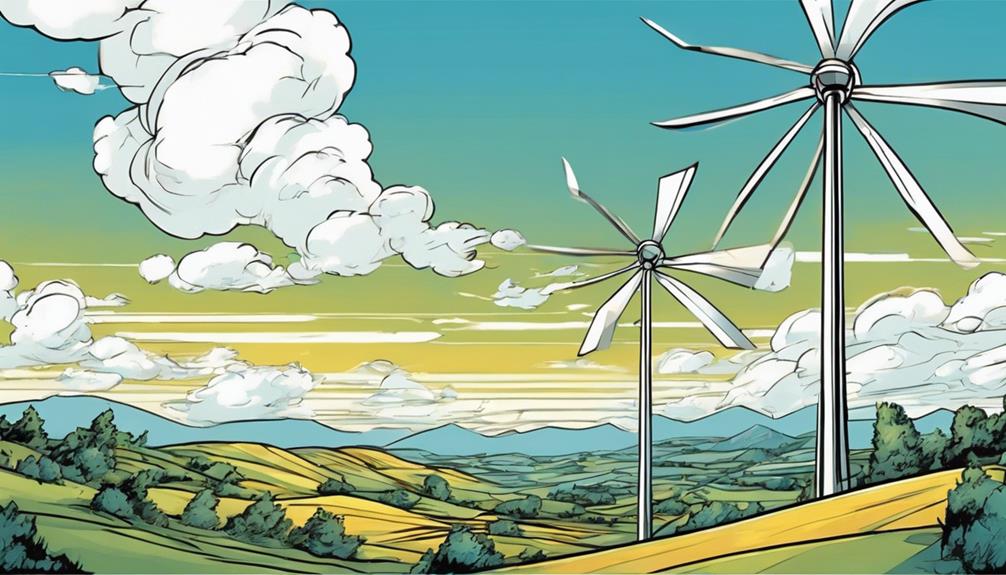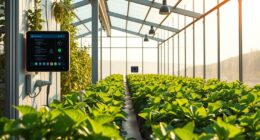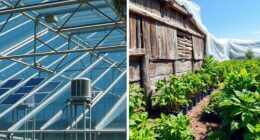Rooftop wind turbine installations have been slow to gain mass-market adoption, but a US startup called Accelerate Wind aims to change that. They have developed a business model that leverages solar industry know-how to reduce the cost of rooftop wind turbine installations. This innovation has caught the attention of the US Department of Energy. The main challenge in small wind turbine development is harvesting energy from slower wind speeds closer to the ground, as the size of the blades is constrained and proximity to the ground limits optimal wind speeds1. The small wind turbine industry faced challenges in the early 2000s due to a lack of standards, but efforts from the Energy Department and the Small Wind Certification Council have improved the situation1. While rooftop wind turbines face engineering challenges and may be less cost-effective than tower-mounted systems, they provide an opportunity to introduce small-scale wind power into cities where land for turbine towers is limited1.
Key Takeaways:
- Rooftop wind turbine installations have been slow to gain mass-market adoption.
- Accelerate Wind has developed a business model to reduce the cost of rooftop wind turbine installations.
- Challenges in small wind turbine development include harvesting energy from slower wind speeds closer to the ground.
- The small wind turbine industry faced challenges due to a lack of standards, but improvements have been made.
- Rooftop wind turbines provide an opportunity for small-scale wind power in cities with limited space for tower-mounted systems.
Small Wind Turbines Everywhere
The small wind turbine industry has been steadily growing, driven by the increasing demand for renewable energy systems and the need for sustainable power sources in various applications. Small wind turbines offer a cost-effective and environmentally friendly solution for generating electricity, particularly in rural areas and agricultural settings. They play a crucial role in diversifying the energy mix and expanding wind energy growth worldwide.
The small wind industry has witnessed a significant rise in recent years, fueled by the global transition to clean energy and the growing recognition of wind power as one of the most impactful renewable energy sources. According to recent data, wind-generated electricity increased by 170 TWh from 2019 to 2020, marking an 11% boost in just one year2. In fact, wind power is responsible for generating 1,592 TWh of electricity annually, making it a vital player in the renewable energy landscape2.
Small wind turbines are designed to cater to different applications and power requirements. They typically produce between 400W to 500W, with the capacity going up to 10kW to 20kW depending on the specific application2. These turbines are cost-effective and have relatively low maintenance costs compared to their larger counterparts. Modern turbines have maintenance costs ranging from 1.5% to 2% of their original cost per year2. This makes small wind systems an attractive option for homeowners, small businesses, and rural communities seeking reliable and sustainable energy solutions.
When it comes to cost, small wind turbines offer a range of options depending on the scale and application. The cost of a small wind turbine for a home or small business typically ranges from $3,000 to $8,000 per kW installed, providing a cost-effective alternative to traditional electricity sources2. For larger installations, such as a 10kW wind turbine for a large house, the cost can range from $50,000 to $80,000, providing significant power generation potential for the property2.
For rural areas and agricultural applications, small wind turbines offer an ideal solution. They can be installed in farm fields, rural communities, or even remote off-grid locations, providing a reliable and sustainable source of electricity. In Massachusetts, for example, a 1 kW wind turbine with an average wind speed of 4 m/s can produce around 100W, equating to about 876 kWh in a year2. While this may be lower compared to a 1kW solar panel system in the same region, which produces 1,533 kWh in a year, the payback period for a small wind turbine is still viable, averaging around 7 years2.
The small wind industry is continually evolving, with advancements in design and technology aimed at optimizing performance in different settings. The PowerPod compact home wind turbine, for instance, claims to potentially produce more power for less money than solar panels in areas with less than 300 days of sunlight a year3. This highlights the versatility and adaptability of small wind turbines in meeting the energy needs of diverse locations and conditions.
However, it’s important to note that wind speed at low altitudes can pose limitations for small wind turbines. Engineers recommend installing turbines about 100 feet above any surrounding obstacles to optimize performance3. Additionally, while new designs like the PowerPod claim to provide significantly more power compared to regular turbines, actual performance and cost data are crucial to demonstrate efficiency and assess the return on investment3. A test period across different cities would help determine the turbine’s energy production potential and financial viability compared to other energy generation options like solar panels3.
Overall, small wind turbines offer an accessible and sustainable solution for fulfilling energy needs in various applications, from rural areas to agricultural settings. They contribute to the growth of the small wind industry and play a vital role in promoting cost-effective and renewable energy systems worldwide.
| Statistical Data | |
|---|---|
| Date of the post | 39 days ago |
| Number of users engaging in the conversation | 28 |
| Rate of replies from different users | Varied |
| Duration of the discussion | Ongoing |
| Number of replies per user | Various |
| Frequency of new comments | Intermittent |
The Rooftop Wind Turbine Opportunity
Rooftop wind turbines present a promising opportunity for harnessing small-scale wind power in urban areas, where space for traditional turbine towers is limited. These cost-effective solutions not only contribute to sustainable energy production but also offer various benefits for homeowners and the environment.
One advantage is that small rooftop wind turbines can operate at lower wind speeds compared to larger counterparts, maximizing efficiency in variable urban conditions. This means that even in areas with lower average wind speeds, homeowners can still generate clean energy and reduce their carbon footprints4. Furthermore, these turbines can complement solar power systems, as they are capable of generating electricity at night and during cloudy or rainy days, providing a more consistent energy supply4.
Another benefit of rooftop wind turbines is that their maintenance and operating costs are relatively low once installed. Although the initial costs for purchasing and installation may be high, they can be offset over time through energy savings4. Additionally, multiple turbines can be installed to scale up energy production according to the household’s needs, offering flexibility and adaptability4. However, it is worth noting that wind speed variations can impact the consistency of energy production for small rooftop wind turbines4.
Despite these advantages, there are some considerations to keep in mind. Some models of small rooftop wind turbines may generate noise and may not be aesthetically pleasing to all homeowners or neighbors. Constraints such as limited roof space, structural requirements, and zoning laws can also limit the installation of these turbines4. However, strategies such as integrating wind turbines with solar panels and electric vehicle charging systems can create a more balanced and reliable energy supply for homeowners, maximizing space utilization and increasing energy efficiency4.
On a global scale, India has significant underutilized infrastructure for producing wind turbine components, as highlighted by the Global Wind Energy Council’s report. Indian companies have developed rooftop turbine models that can generate electricity effectively, even at low wind speeds5. Rooftop wind turbines offer a higher energy yield compared to solar panels and when hybridized with solar systems, they can provide round-the-clock clean, renewable energy5. However, challenges such as high costs, lack of incentives, and regulatory hurdles exist in the rooftop wind power sector. To overcome these barriers, comprehensive policies providing subsidies, tax benefits, and a clear regulatory framework are needed to encourage the adoption of rooftop wind power5. Moreover, the transformation of idle rooftop spaces into micro power plants not only maximizes energy production but also enhances the aesthetics of expanding cities, as wind turbines blend seamlessly into landscapes compared to sprawling solar farms5.
Overall, rooftop wind turbines offer a promising opportunity to leverage small-scale wind power in urban areas. With further advancements in technology, cost reductions, and supportive policies, these turbines can play an essential role in driving the transition towards clean and sustainable energy sources.
A New Business Model For Rooftop Wind Turbines
Accelerate Wind, a US startup, has developed a groundbreaking business model that combines rooftop wind turbines with the rooftop solar industry to reduce costs and revolutionize renewable energy generation. By leveraging the expertise and infrastructure of the solar industry, Accelerate Wind aims to accelerate the adoption of rooftop wind turbines, making clean energy more accessible and affordable than ever before.
The core of Accelerate Wind’s rooftop wind turbine system lies in its innovative airfoil design, optimizing wind capture and increasing power output. The airfoil is strategically positioned on the edge of the roof, where it directs higher-speed wind towards the turbine, boosting energy production. The system is built with common components, ensuring cost reduction and scalability.
With a focus on cost reduction, Accelerate Wind aims to drive down wind energy costs by 60% or more, making it a highly competitive alternative to traditional energy sources. This cost reduction will have a significant impact on accelerating the adoption of rooftop wind turbines on a global scale by making them economically viable for a wide range of applications.
The potential of rooftop wind turbines to increase power generation and decrease reliance on the grid is immense. Accelerate Wind’s system, known as a “wind harvesting platform,” typically consists of 20-40 units installed on the edge of a building facing the predominant wind direction. Each 1,000-pound unit is designed to withstand winds ranging from 120 to 158 mph, depending on specification, ensuring durability and performance even in challenging weather conditions.
A key advantage of rooftop wind turbines is their compatibility with existing structures. Accelerate Wind’s bladeless wind turbines are designed to power various buildings, including apartment buildings, warehouses, manufacturing facilities, offices, hospitals, and retail centers. This versatility opens up numerous opportunities to integrate renewable energy generation seamlessly into urban and commercial landscapes.
The future is promising for Accelerate Wind, with 400 qualified projects lined up in its pipeline. The company is planning to roll out commercially in Europe and North America by 2025, bringing its cutting-edge rooftop wind turbine system to a broader market. These developments align with the growing recognition of distributed power innovation’s crucial role in meeting companies’ energy needs, as stated by Maynard Holt, founder & CEO of Veriten.
Furthermore, the integration of rooftop wind turbines with existing rooftop solar arrays is an exciting proposition. By combining these two renewable energy sources, onsite power generation can be achieved, reducing dependence on the grid and eliminating supply disruptions. This integration highlights the complementarity and synergy between rooftop wind turbines and solar energy systems, creating a sustainable pathway for uninterrupted clean energy production.
While rooftop wind turbines offer numerous advantages, challenges have been encountered along the way. Turbulent air flow affecting performance, noise, vibration issues, and concerns about blade detachment’s safety are among the challenges that must be overcome. Early rooftop wind projects faced underwhelming energy generation levels, emphasizing the need for continued research and development.
In conclusion, Accelerate Wind’s innovative business model and rooftop wind turbine system have the potential to accelerate the adoption of clean energy generation by providing a cost-effective, scalable, and versatile solution. With their groundbreaking airfoil design, common components, and integration capabilities with rooftop solar arrays, rooftop wind turbines have the power to revolutionize renewable energy and play a significant role in meeting our future energy needs, reducing carbon emissions, and ensuring a sustainable future for generations to come6.
The Rooftop Solar Connection
The rooftop solar industry has faced challenges due to soft costs, such as permitting, labor, and marketing. However, there is an opportunity to address these challenges by integrating rooftop wind turbines with rooftop solar arrays. By leveraging the benefits of both technologies, building owners can maximize their clean energy generation and cost savings.
Rooftop wind turbines, like the ones developed by Aeromine Technologies7, provide an excellent complement to rooftop solar arrays. These wind turbines offer 50% more energy production than rooftop solar at the same cost, making them an attractive option for building owners looking to enhance their renewable energy systems. Aeromine Technologies has received over 11,000 inquiries from more than 6,500 companies, indicating a strong demand for their wind energy technology7.
Aeromine Technologies already has a pipeline of 400 qualified projects for the installation of their wind energy units, demonstrating the growing interest in rooftop wind turbines7. Their customers primarily come from various sectors, including industrial, logistics, automotive, commercial, and government sectors7.
When integrated into a modular system, rooftop wind turbines can be right-sized to match the energy needs of the building. Each Aeromine unit weighs just over 1,000 lbs and can withstand winds of up to 120 mph7. A system comprising 10 units or more can add 50kW of capacity to a roof, significantly enhancing energy production7. For example, an Aeromine system installed on a 50-foot-high roof with an average wind speed of 8 meters per second can produce over 150,000 kWh per year7.
The pricing of Aeromine’s wind energy units is on par with similarly rated commercial rooftop solar power systems, making them an economically viable choice for building owners seeking to invest in renewable energy7. By integrating rooftop wind turbines alongside solar arrays, soft costs associated with sales and installation can be addressed, further improving the cost-effectiveness of the overall system.
Another example of the rooftop solar connection is the PowerNEST system developed by Ibis Power8. This innovative rooftop installation can produce six to ten times more energy than standalone rooftop solar, making it a compelling option for maximizing clean energy generation8. Ibis Power has already installed five projects in the Netherlands featuring the PowerNEST system, demonstrating its successful implementation8.
One such installation, known as HaasjeOver, includes 10 PowerNEST modules with a total of 240 bifacial, 396 W solar panels and 56 335 W monofacial panels. This configuration generates an impressive annual power output of 116 MWh8. In addition to the solar panels, the HaasjeOver installation also incorporates four 3 kW wind turbines. Together, the solar and wind components yield a total combined solar and wind output of 140 MWh/year8.
The PowerNEST system covers 85% of the building’s energy needs, significantly reducing dependence on the grid and fossil fuels8. Prior to the installation of PowerNEST, the rooftop had space for only around 40 solar panels, generating a much lower output of 11 MWh/year to 12 MWh/year8. The significant increase in energy production achieved through the integration of both solar and wind technologies highlights the potential of this rooftop solar connection8.
While rooftop solar arrays and rooftop wind turbines are distinct technologies, they can work in harmony to provide a consistent source of electricity throughout the year. Solar and wind energy complement each other, with solar producing the most during daylight hours in the summer and wind during nighttime hours in the winter9. These predictable output patterns allow hybrid energy systems, combining both solar and wind, to deliver a reliable and continuous source of electricity9.
Hybrid energy systems offer a way to balance the strengths and weaknesses of solar and wind energy, ensuring consistent power generation year-round9. Although hybrid energy systems might be more expensive due to their reliance on multiple electricity resources, they can be justified in scenarios where grid reliability is an issue or for off-grid systems9. These systems also enable renewable developers to participate more actively in deregulated electricity markets by ensuring production during peak usage hours and throughout the year9.
Property owners can estimate electricity cost savings by using a solar calculator to see how much electricity can be offset with solar panels9. This estimation allows them to make informed decisions about incorporating rooftop solar arrays and wind turbines into their renewable energy systems.
| Aeromine Technologies | PowerNEST System | |
|---|---|---|
| Energy Production | Provides 50% more energy than rooftop solar at the same cost7 | Produces six to ten times more energy than standalone rooftop solar8 |
| Customer Interest | Over 11,000 inquiries received from more than 6,500 companies7 | Already installed five projects in the Netherlands and developing 12 more8 |
| System Configuration | A system comprising 10 units or more adds 50kW of capacity to a roof7 | Includes 10 PowerNEST modules with bifacial and monofacial solar panels and four 3 kW wind turbines8 |
| Energy Output | Installed on a 50-foot-high roof with an average wind speed of 8 meters per second can produce over 150,000 kWh per year7 | Generates an annual power output of 116 MWh with a total combined solar and wind output of 140 MWh/year8 |
By combining rooftop wind turbines with rooftop solar arrays, building owners can tap into the full potential of clean energy generation. The rooftop solar connection allows for efficient energy capture, cost savings, and a reduced carbon footprint. With advancements in power electronics, installation costs are minimized, and cross-training of solar installers becomes possible. Embracing this synergy between rooftop wind turbines and rooftop solar arrays opens up new possibilities for sustainable energy solutions.
Aiming Rooftop Wind Turbines At Commercial Buildings
While rooftop solar has gained traction in the commercial buildings market, many commercial buildings still lack sufficient rooftop space for a large solar array. Rooftop wind turbines provide an opportunity to fill this gap and contribute to meeting the energy needs of commercial buildings.
Aeromine Technologies, a University of Houston spinoff, has designed a unique rooftop wind energy capture system that takes up minimal space, operates silently, and delivers up to 50% more energy than a solar array of the same price10. Their motionless wind generators offer a cost-effective and efficient solution for commercial buildings looking to adopt sustainable energy solutions.
By leveraging the latest advancements in wind turbine technology, commercial buildings can harness the power of wind to meet their energy needs. Flower Turbines, based in New York City, creates vertical wind turbines that can start generating power at low wind speeds of just 0.7 meters per second compared to traditional turbines requiring 3.5 m/s10. This means that even in areas with relatively low wind speeds, commercial buildings can still benefit from rooftop wind turbines.
Additionally, PowerNEST by IBIS Power in Eindhoven, the Netherlands, integrates wind and solar to capture 6 to 10 times more electricity than rooftop solar panels alone10. This combination of wind and solar power generation provides a reliable and consistent source of clean energy for commercial buildings.
Accelerate Wind, a US startup, aims to cut rooftop wind turbine costs by up to 60% by leveraging rooftop solar industry methods and technology11. Their approach involves utilizing modular systems, aligning installations with rooftop solar arrays, and focusing on reducing soft costs such as permitting, labor, marketing, and installation11. By streamlining the installation process and reducing costs, Accelerate Wind makes rooftop wind turbines a viable and cost-effective solution for commercial buildings.
With the potential to generate significant amounts of clean energy and reduce reliance on the grid, rooftop wind turbines offer commercial buildings a sustainable and reliable energy solution1011. By harnessing the power of the wind, commercial buildings can contribute to a greener future while also enjoying the economic benefits of reduced energy costs and increased energy independence.
Installation and Maintenance of Rooftop Wind Turbines
When it comes to installing rooftop wind turbines, it is highly recommended to enlist the services of a professional installer to ensure a safe and efficient setup12. Professional installers are equipped with the knowledge and expertise to handle the complexities of the installation process, including securing the turbine to the roof structure and connecting it to the electrical system12. Their experience ensures that the installation is done correctly, maximizing the turbine’s performance and minimizing the risk of damage or accidents12.
Once the rooftop wind turbine is installed, regular maintenance is key to keeping it in optimal condition and maximizing its lifespan13. Annual maintenance is typically recommended, although frequency may vary based on factors such as turbine type, age, location, and energy production13. During maintenance, a professional is responsible for inspecting the turbine, checking and tightening bolts and electrical connections, inspecting for corrosion, and replacing any worn-out components13.
A professional installer may offer a service and maintenance program to ensure the turbine’s long-term performance13. This program can include regular inspections, preventive maintenance, and predictive maintenance to identify and address potential issues before they cause significant problems13. By adhering to the manufacturer’s recommendations and industry best practices, the professional maintenance program ensures that the turbine operates at its full capacity and that any problems are addressed promptly13.
Estimating the annual energy output of a rooftop wind turbine is crucial in determining its feasibility and its ability to meet your energy needs12. A professional installer will consider various factors, such as the wind turbine’s power curve, the average annual wind speed in the area, the tower height, and the wind frequency distribution, to provide accurate energy output estimates12. These estimates help homeowners make informed decisions about the installation and use of rooftop wind turbines12.
To illustrate the importance of professional installation and regular maintenance, consider the following statistics from previous installations. The support pole for rooftop wind turbines commonly consists of a 3-inch galvanized steel pole, reaching a height of 218 inches from the ground to the mounting pipe14. A 1.5-inch schedule 40 pipe, 38 inches in length, is used to prevent the turbine blades from coming into contact with the larger 3-inch pole14. The power output of a rooftop wind turbine can vary significantly, starting at 62.5 watts during the initial half-hour of operation and increasing to 244 watts after two months of adjustments14. These examples highlight the importance of proper installation and ongoing maintenance to ensure optimal performance and longevity of rooftop wind turbines.
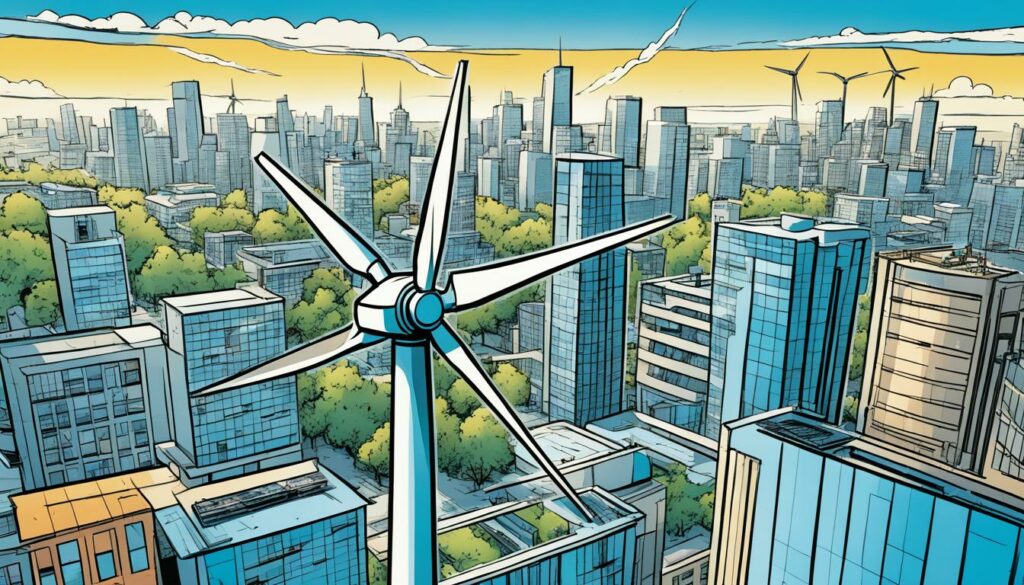
| Installation and Maintenance Benefits | Maintenance Tips |
|---|---|
|
|
Siting and Sizing of Rooftop Wind Turbines
Proper siting of rooftop wind turbines is crucial for optimizing energy generation. Wind resource considerations, including wind direction and speed, play a significant role in determining the ideal location for these turbines. Additionally, site selection should take into account existing obstacles, such as trees or neighboring structures, as well as potential future obstructions. To ensure unobstructed airflow, wind turbines should be sited upwind of buildings and trees, at least 30 feet above any obstructions within a 300-foot radius15.
When it comes to sizing rooftop wind turbines, it’s essential to consider your energy needs and the average wind speed at your location. Professional installers can help determine the appropriate turbine size and tower height based on your energy budget and the estimated annual energy output. By assessing these factors, you can choose a turbine that maximizes energy production while being compatible with your specific requirements15.
A critical consideration in the siting and sizing process is the tower height. The tower height determines the height at which the wind resource will be accessed. Higher tower heights allow access to better wind resources, which can significantly impact the energy production of the turbines. An installer will take into account local zoning ordinances that often have height limits for structures in residential-zoned areas, typically around 35 feet. Regulations may vary, so it’s crucial to consult with local authorities during the planning process15.
Factors to Consider in Siting Rooftop Wind Turbines:
- Wind resource considerations such as wind direction and speed
- Presence of existing obstacles like buildings and trees
- Potential future obstructions
- Zoning ordinances and height limits in residential areas
Factors to Consider in Sizing Rooftop Wind Turbines:
- Energy budget and desired energy output
- Average wind speed at the installation location
By carefully considering these factors and working closely with professionals, you can ensure that your rooftop wind turbines are sited and sized correctly for optimal energy generation. This will not only harness the full potential of wind energy but also contribute to reducing carbon emissions and promoting a cleaner, more sustainable future1516.
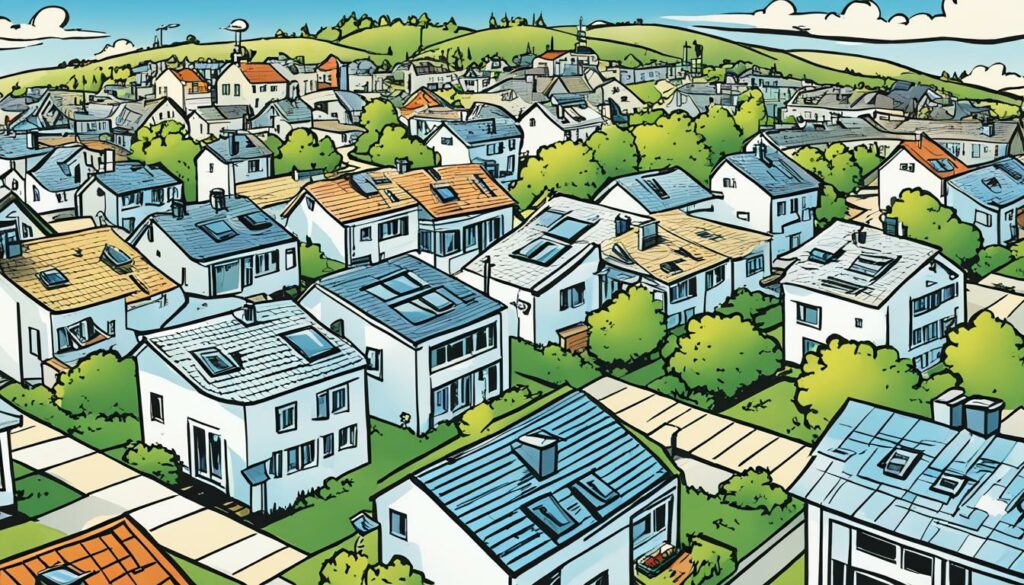
| Turbine Type | Turbine Size | Application |
|---|---|---|
| Small Turbines | Ranging from 20 Watts to 100 kilowatts | Can be used in various applications |
| Large Turbines | Require open spaces and larger land areas | Primarily used for utility-scale electricity generation |
When considering the size of rooftop wind turbines, it’s important to note that they are generally smaller compared to large turbines that require open spaces. Rooftop wind systems are designed to be compact and versatile, making them suitable for residential and small-scale applications16. While smaller in size, rooftop wind turbines can still play a significant role in generating clean electricity for homes when combined with other renewable energy sources like solar panels. This integration allows homeowners to lower their power bills and reduce carbon emissions simultaneously1617.
Grid-Connected and Off-Grid Wind Systems
In the world of renewable energy, wind power plays a crucial role in meeting sustainable energy goals. Rooftop wind turbines offer an efficient and practical solution for generating clean electricity. These systems can be categorized into two types: grid-connected and off-grid wind systems.
Grid-connected systems are designed to be connected to the traditional electric grid. They can provide electricity to the user while also having the ability to export excess power back to the grid. This not only reduces reliance on utility-supplied electricity but can potentially earn credits or store energy for future use. Grid-connected systems are particularly useful in areas with ample wind resources, high utility electricity costs, and favorable grid connection regulations. These systems can significantly contribute to achieving energy independence and reducing carbon emissions. [+18]
In contrast, off-grid wind systems are designed to operate independently of the electric grid. They are suitable for remote or isolated locations where access to the grid may not be feasible. Off-grid systems provide reliable power to areas that currently lack access to electricity, such as rural communities or island regions. These systems can be combined with other renewable energy sources like solar power to create hybrid power systems. Hybrid power systems have the advantage of utilizing wind and solar resources, which often complement each other seasonally and diurnally. By harnessing both wind and solar energy, these systems can ensure better system reliability and reduce the reliance on batteries, leading to higher energy efficiency and cost savings. [+19]
In terms of power generation, rooftop wind turbines offer various advantages. The statistical data extracted from link 1 emphasizes the turbine’s capabilities. With a maximum power of 20 kW and a rated power of 10 kW, rooftop wind turbines can generate a substantial amount of electricity. The large rotor diameter of 9.8 m and a swept area of 75.4 m² allow the turbine to capture more wind energy, resulting in higher output. The estimated annual output can range from 3,160 kWh at 2 m/s wind speed to 71,854 kWh at wind speeds of 9 and 10 m/s. These statistics demonstrate the turbine’s ability to produce significant amounts of clean energy, which contributes to energy independence and reduces reliance on conventional power sources. [+18]
Rooftop wind turbines can serve diverse applications, from industrial and agricultural settings to off-grid and micro-grid installations. They can be utilized in remote communities and built-up environments, making them versatile solutions for various energy needs. The wind turbines feature active blade pitch control, electronic control systems, mechanical brakes, storm detection, and remote customization capabilities, ensuring efficient and safe operation. Furthermore, these turbines operate within a sound range of 33 dB(A) in a quiet living room to 60 dB(A) at night, minimizing noise pollution concerns. [+18]
While grid-connected wind systems and off-grid wind systems differ in their connection to the grid, both play vital roles in the transition to clean energy. Grid-connected systems offer the advantage of being able to contribute excess power to the grid, reducing greenhouse gas emissions and dependence on non-renewable energy sources. Off-grid systems, on the other hand, provide reliable and sustainable power to areas without access to the electric grid, promoting energy equity and resilience. By understanding the capabilities and benefits of both systems, individuals and communities can make informed decisions to transition to cleaner, more sustainable energy sources. [+20][+19]
Comparing Grid-Connected and Off-Grid Wind Systems
| System Type | Advantages | Considerations |
|---|---|---|
| Grid-Connected |
|
|
| Off-Grid |
|
|
Both grid-connected and off-grid wind systems offer unique advantages and considerations. The choice between the two depends on specific requirements, geographical location, and energy needs. Regardless of the system type, rooftop wind turbines contribute to a more sustainable and resilient energy future, promoting cleaner air, reduced greenhouse gas emissions, and energy independence.
Conclusion
Rooftop wind turbines offer a promising solution for clean energy generation in urban areas. Despite engineering challenges and cost considerations, these turbines provide an opportunity to harness wind power on a smaller scale, especially where conventional wind turbines are impractical due to limited space. By integrating rooftop wind turbines with solar energy systems, a cost-effective business model can be created to promote renewable solutions and reduce environmental impact. Proper siting, sizing, installation, and maintenance are crucial in maximizing the energy generation potential of rooftop wind turbines and ensuring their long-term sustainability. These sustainable technologies not only contribute to a greener future but also provide economic benefits to homeowners and businesses.
Referencing21, the development of the VX175 wind turbine by Ventum Dynamics exemplifies the progress in wind turbine construction, with a shroud design that accelerates wind flow, allowing for enhanced air volume and omnidirectional capture. Darwin’s windmill, referenced in21, demonstrated the potential of horizontal windmills in power efficiency compared to vertical mills. The combination of static and dynamic turbine designs in the IMPLUX turbine, based on Darwin’s principles, as noted in21, further enhances power extraction capabilities.
Considering22, computational fluid dynamics (CFD) plays a vital role in modeling wind flows and optimizing turbine locations on rooftops, accounting for building height, shape, wind direction, and other factors that influence performance. Wind resource assessments, highlighted in22, aid in understanding wind speed, turbulence characteristics, and design thresholds for small wind turbines in urban settings. CFD simulations, as discussed in22, not only provide reliable alternatives for resource assessments but also determine the windflow behavior over roofs and the most suitable mounting locations.
Incorporating findings from23, analysis of a QuietRevolution QR6 wind turbine on a high-rise rooftop indicated an annual energy yield of 42,557 kWh. This wind turbine, with an energy rating of 7 kW, showcased the potential of rooftop wind turbines as a viable source of clean energy. The study’s utilization of OpenFOAM, as mentioned in23, demonstrated the application of computational fluid dynamics software to determine wind speed and optimize performance in an urban setting.

